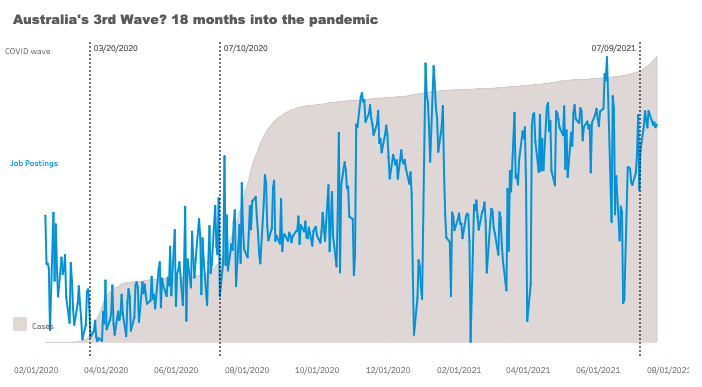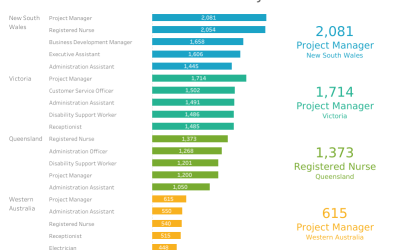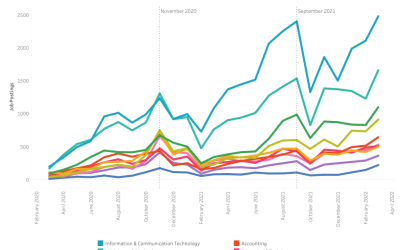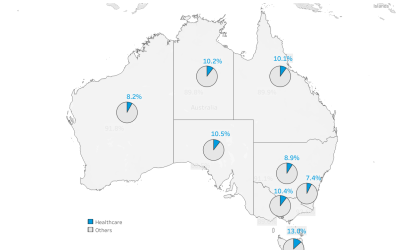
After 18+ months of a pandemic, sometimes it’s easy to forget that we’re still in the middle of it. Only 27% of the country is fully vaccinated as of this writing, and new waves and new lockdowns are either happening or on the horizon.
We are in the 3rd Wave of COVID right now, and it’s interesting to see how this wave has affected different parts of the job market. Let’s take a look at some of the data we found using the Rover app.
What we see from this chart, which dating back to the start of the pandemic, was that each wave brought about different types of market changes. During the first wave, there was a stark decrease in job postings. Then came a robust recovery – one that looks like it even surprised many economists.
The 2nd wave was a bit different. Postings were very volatile, almost like employers were not sure whether or not they should change their hiring decisions based on this wave. In general, new postings stayed pretty high, but it was not a smooth transition.
Finally, we hit the third wave. Since we’re still in this wave, it’s not possible to say with certainty what the effects will be on the market, but what we can see is that there was a sudden decrease in job postings, before retuning upwards slightly and remaining steady. You can see a more detailed version of this in the chart below:
It looks like there was a general decrease in job postings before the third wave technically hit, perhaps as employers braced for lockdowns and economic impacts, and then once the wave hit, they went back to a more traditional posting schedule. Likely because their own economic impact either wasn’t as severe as they thought or purchasing behavior stayed the same.
It is also interesting to see how much cumulative job postings changed based on location. While every state experienced a decrease, Queensland only saw about a 4% drop, while Western Australia and Australian Capital Territory saw an 18% drop. Tasmania saw an incredible 30% drop in postings, indicating that they were hit much harder by this third wave than the rest of Australia. Overall, it doesn’t appear that this third wave is going to have any large scale economic impacts (yet, since the wave is still going), but there’s no denying that employers were bracing for trouble, at least in the days leading up to it.


